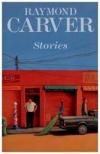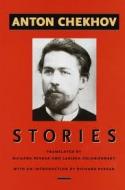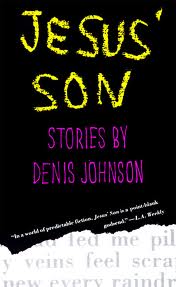Author Photo And Bio
As I write this list, I'm somewhat embarrassed by the obviousness of it, thinking I should be unearthing some forgotten nugget or two. I'm also struck by knowing how fluid this is--tomorrow or next month or next year likely would bring a completely different version of the list. But for today, as I type this out, these are all books that have been important to me at different times as a writer and reader. And, I suppose, still are.
 1. The Unbearable Lightness of Being by Milan Kundera (1984). Kundera’s masterpiece begins during the Prague Spring of 1968, when it appeared the Soviet Union’s domination of Czechoslovakia might be weakening and ends a few years later when those hopes were dashed. It explores a range of themes, including love, attachment, duty and death, through two connected couples. The first is young woman in love with a man torn between his love for her and his incorrigible womanizing; the second is one of his mistresses and her humbly faithful lover. This magnificent novel juxtaposes geographically distant places; brilliant and playful reflections; and a variety of styles Kundera paints a vivid portrait of Czech intellectual life at the time and the eternal conflicts of the human heart.
1. The Unbearable Lightness of Being by Milan Kundera (1984). Kundera’s masterpiece begins during the Prague Spring of 1968, when it appeared the Soviet Union’s domination of Czechoslovakia might be weakening and ends a few years later when those hopes were dashed. It explores a range of themes, including love, attachment, duty and death, through two connected couples. The first is young woman in love with a man torn between his love for her and his incorrigible womanizing; the second is one of his mistresses and her humbly faithful lover. This magnificent novel juxtaposes geographically distant places; brilliant and playful reflections; and a variety of styles Kundera paints a vivid portrait of Czech intellectual life at the time and the eternal conflicts of the human heart.
 2. The stories of Raymond Carver (1938–88). Culled from his own hard-drinking, working-class upbringing in the Pacific Northwest, Carver’s stories depict relationships in various states of decay, the unsung losses of unsung people, and the prolonged misery of ordinary people delivered in a sly understated tone sometimes called dirty realism. A master of the short story, Carver’s name was only beginning to be mentioned in the same breath as Hemingway and O’Connor when lung cancer brought him down at the age of fifty.
2. The stories of Raymond Carver (1938–88). Culled from his own hard-drinking, working-class upbringing in the Pacific Northwest, Carver’s stories depict relationships in various states of decay, the unsung losses of unsung people, and the prolonged misery of ordinary people delivered in a sly understated tone sometimes called dirty realism. A master of the short story, Carver’s name was only beginning to be mentioned in the same breath as Hemingway and O’Connor when lung cancer brought him down at the age of fifty.
 3. The White Album by Joan Didion (1979). This essay collection records indelibly the upheavals and aftermaths of the 1960s. Examining key events, figures, and trends of the era—including Charles Manson, the Black Panthers, and the shopping mall—through the lens of her own spiritual confusion, Joan Didion helped to define mass culture as we now understand it. Written with a commanding sureness of tone and linguistic precision, Didion’s collection is a seminal text of American reportage.
3. The White Album by Joan Didion (1979). This essay collection records indelibly the upheavals and aftermaths of the 1960s. Examining key events, figures, and trends of the era—including Charles Manson, the Black Panthers, and the shopping mall—through the lens of her own spiritual confusion, Joan Didion helped to define mass culture as we now understand it. Written with a commanding sureness of tone and linguistic precision, Didion’s collection is a seminal text of American reportage.
 4. The Killer Inside Me by Jim Thompson (1952). Lou Ford is the boy next door —a deputy sheriff in his Texas hometown. But he suffers from “the sickness,” which urges him to kill women and others who get in his way. Through Ford’s chilling first-person narration, Thompson takes us inside the mind of a serial killer.
4. The Killer Inside Me by Jim Thompson (1952). Lou Ford is the boy next door —a deputy sheriff in his Texas hometown. But he suffers from “the sickness,” which urges him to kill women and others who get in his way. Through Ford’s chilling first-person narration, Thompson takes us inside the mind of a serial killer.
 5. Last Exit to Brooklyn by Hubert Selby, Jr. (1964). This stylistically uncompromising and innovative, gritty and notorious novel is a famously bleak, foul-mouthed and frank collection of six linked stories set in the violent neighbourhoods of Brooklyn. Selby brings out the dope addicts, hoodlums, prostitutes, workers, and thieves brawling in the borough’s back alleys of Brooklyn. First published in the USA in 1957 and then again in 1961 and 1963 before making a splash in 1964, it showed us the fierce, primal rage seething in America’s cities.
5. Last Exit to Brooklyn by Hubert Selby, Jr. (1964). This stylistically uncompromising and innovative, gritty and notorious novel is a famously bleak, foul-mouthed and frank collection of six linked stories set in the violent neighbourhoods of Brooklyn. Selby brings out the dope addicts, hoodlums, prostitutes, workers, and thieves brawling in the borough’s back alleys of Brooklyn. First published in the USA in 1957 and then again in 1961 and 1963 before making a splash in 1964, it showed us the fierce, primal rage seething in America’s cities.
 6. Ask the Dust by John Fante (1939). This coming-of-age tale features Fante’s alter ego, Arturo Bandini: a poor, innocent, aspiring writer from Colorado, stretching out his limbo in 1930s Los Angeles. Bandini prowls the city’s dusty alleys for experience he can turn into prose, eats oranges in his hotel room, and dreams of success. Awkward with women, he falls for a troubled Mexican waitress but can’t sustain the relationship. He squanders what little money he earns. All he desires is literary glory, so that even when he nearly drowns, he thinks: “This was the end of Arturo Bandini —but even then I was writing it all down.”
6. Ask the Dust by John Fante (1939). This coming-of-age tale features Fante’s alter ego, Arturo Bandini: a poor, innocent, aspiring writer from Colorado, stretching out his limbo in 1930s Los Angeles. Bandini prowls the city’s dusty alleys for experience he can turn into prose, eats oranges in his hotel room, and dreams of success. Awkward with women, he falls for a troubled Mexican waitress but can’t sustain the relationship. He squanders what little money he earns. All he desires is literary glory, so that even when he nearly drowns, he thinks: “This was the end of Arturo Bandini —but even then I was writing it all down.”
 7. The stories of Anton Chekhov (1860–1904). The son of a freed Russian serf, Anton Chekhov became a doctor who, between the patients he often treated without charge, invented the modern short story. The form had been overdecorated with trick endings and swags of atmosphere. Chekhov freed it to reflect the earnest urgencies of ordinary lives in crises through prose that blended a deeply compassionate imagination with precise description. “He remains a great teacher-healer-sage,” Allan Gurganus observed of Chekhov’s stories, which “continue to haunt, inspire, and baffle.”
7. The stories of Anton Chekhov (1860–1904). The son of a freed Russian serf, Anton Chekhov became a doctor who, between the patients he often treated without charge, invented the modern short story. The form had been overdecorated with trick endings and swags of atmosphere. Chekhov freed it to reflect the earnest urgencies of ordinary lives in crises through prose that blended a deeply compassionate imagination with precise description. “He remains a great teacher-healer-sage,” Allan Gurganus observed of Chekhov’s stories, which “continue to haunt, inspire, and baffle.”
 8. Jesus’ Son by Denis Johnson (1992). Although the title comes from Lou Reed’s song “Heroin,” it assumes another meaning in this collection of eleven linked short stories about a character who endures drug addiction, car crashes, and violence to learn who he is and achieve some grace. The characters sometimes seem futile as they score drugs and scrounge for money and love, but the real story is the narrator’s fumbling process toward self-discovery.
8. Jesus’ Son by Denis Johnson (1992). Although the title comes from Lou Reed’s song “Heroin,” it assumes another meaning in this collection of eleven linked short stories about a character who endures drug addiction, car crashes, and violence to learn who he is and achieve some grace. The characters sometimes seem futile as they score drugs and scrounge for money and love, but the real story is the narrator’s fumbling process toward self-discovery.
 9. The Catcher in the Rye by J. D. Salinger (1951). After being dismissed from another prep school, Holden Caulfield —whose slangy, intimate narration defines this novel —has a series of misadventures in Manhattan before going home for Christmas. Haunted by the death of brother Allie, he wants what he cannot have —to snare the elusive Jane Gallagher, to run away with his sister Phoebe, to “catch” innocent youths before they fall into the “phony” world of adults. A timeless voice of adolescent rage and assurance, Holden may rank highest in the pantheon of antiestablishment heroes.
9. The Catcher in the Rye by J. D. Salinger (1951). After being dismissed from another prep school, Holden Caulfield —whose slangy, intimate narration defines this novel —has a series of misadventures in Manhattan before going home for Christmas. Haunted by the death of brother Allie, he wants what he cannot have —to snare the elusive Jane Gallagher, to run away with his sister Phoebe, to “catch” innocent youths before they fall into the “phony” world of adults. A timeless voice of adolescent rage and assurance, Holden may rank highest in the pantheon of antiestablishment heroes.
 10. Stories of Carson McCullers (1917-67). This collection assembles McCullers’s best stories, including her beloved novella “The Ballad of the Sad Café.” A haunting tale of a human triangle that culminates in an astonishing brawl, the novella introduces readers to Miss Amelia, a formidable southern woman whose café serves as the town’s gathering place. Among other fine works, the collection also includes “Wunderkind,” McCullers’s first published story written when she was only seventeen about a musical prodigy who suddenly realizes she will not go on to become a great pianist.
10. Stories of Carson McCullers (1917-67). This collection assembles McCullers’s best stories, including her beloved novella “The Ballad of the Sad Café.” A haunting tale of a human triangle that culminates in an astonishing brawl, the novella introduces readers to Miss Amelia, a formidable southern woman whose café serves as the town’s gathering place. Among other fine works, the collection also includes “Wunderkind,” McCullers’s first published story written when she was only seventeen about a musical prodigy who suddenly realizes she will not go on to become a great pianist.